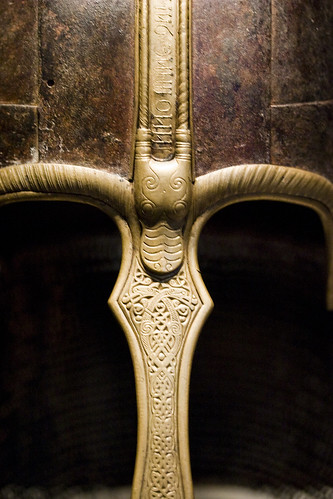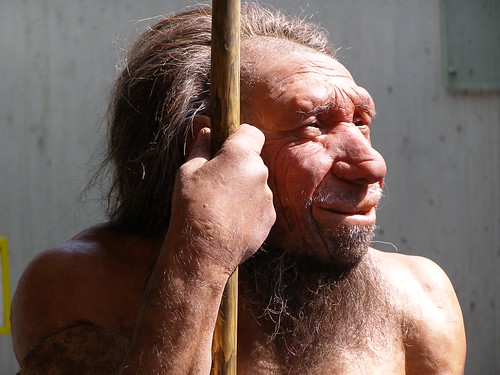
A massive haul of more than 10,000 Roman coins crammed inside a buried clay pot has been unearthed by an amateur metal detecting enthusiast – on his first ever treasure hunt, and this only a few days after it was announced the Vale of York Hoard was purchased by the British Museum. The silver and bronze ‘nummi’ coins, dating from between 240 AD and 320 AD, were discovered in a farmer’s field near Shrewsbury, in Shropshire, last month. Experts say the coins have spent an estimated 1,700 years underground. The stunning collection of coins, most of which were found inside the broken brown pot, was uncovered by Nick Davies during a search of land in the Shrewsbury area – just a month after he took up the hobby of metal detecting. This amazing find is one of the largest collections of Roman coins ever discovered in Shropshire, and the biggest collection of Roman coins to be found in Britain this year.
From a brief look at the hoard there seems to be a minimum of 10,000 coins, of which the majority are corroded together in the pot. Nick did not touch the coins from within the pot and this will mean that staff at the British Museum will be able to excavate the coins carefully. This will enable them to know whether the coins were placed in the pot all at the same time, or were added to piecemeal over time. All coins found are bronze (copper alloy), and some of them have been silver washed. They are known as nummi (which just means coin) and were common during the 4th century AD. From the coins which have been provisionally identified they seem to date from the period 320 – 340 AD, late in the reign of Constantine I and the House of Constantine. Amongst the coins are issues celebrating the anniversary of the founding of Rome and Constantinople. In total the coins and the pot weigh in excess of 70 lbs. The pottery vessel is very large and probably used in the domestic part of a farmhouse as a large storage jar. It does not seem to be locally made. It is very fine being extraordinarily thin.
A small excavation was undertaken with the hope of understanding how the coins were placed in the ground. This was a success and it seems most likely that the pot was buried in the ground probably part full and was subsequently topped up before a large stone was placed on top acting as a marker. The top of the pot had been broken in the ground and a large number of the coins spread in the area. All of these were recovered during the excavation with the help of a metal detector. This added at least another 300 coins to the total. We now know that there are no more coins (or another hoard) in the area.
The coins within the hoard represent some of the most commonly found coins from Roman Britain; most metal detectorists will have one or two in their collection. The importance of this find is the sheer number, or material wealth they represent. It is likely that the hoard represents a person or communities wealth, possibly as a payment for a harvest. Why it was not collected by the owner is a mystery – but one that we can share and enjoy 1700 years after the fact.
Peter Reavill, finds liaison officer from the Portable Antiquities Scheme, said: “The coins date to the reign of Constantine I when Britain was being used to produce food for the Roman Empire. It is possible these coins were paid to a farmer who buried them and used them as a kind of piggy-bank.”
Mr Reavill declined to put a figure on either the value of the coins or the pot until the findings of the inquest are known, but he described the discovery as a ‘large and important’ find and that the exact location of the find could not be revealed for security reasons.
The coins have now been sent to the British Museum for detailed examination, before a report is sent to the coroner. Experts are expected to spend several months cleaning and separating the coins, which have fused together. They will also give them further identification before sending them to the coroner so they can be valued by a Government panel. The haul could then be put on display at Shrewsbury’s new £10million heritage centre.
The Vale of York Hoard – a massive Viking hoard also found by metal detecting hobbyists – will be on display at the Yorkshire Museum in York from September 17 to November 1 before moving to the British Museum.




 German archaeologists have made new discoveries at
German archaeologists have made new discoveries at 
 Google Translate has added Latin to the ever-expanding list of languages the free service offers – in which the old-fashioned ‘Lorum ipsum dolor’ (or lipsum) is upgraded to a more modern ‘Hello World!’
Google Translate has added Latin to the ever-expanding list of languages the free service offers – in which the old-fashioned ‘Lorum ipsum dolor’ (or lipsum) is upgraded to a more modern ‘Hello World!’ A new research project from the Universit Libre de Bruxelles (ULB) takes us one step further as it comes to understanding Neanderthal locomotion. The Laboratory of Anatomy, Biomechanics and Organogenesis’ (LABO for short) project created a 3D virtual reconstruction of a pair of Neanderthal lower limbs.
A new research project from the Universit Libre de Bruxelles (ULB) takes us one step further as it comes to understanding Neanderthal locomotion. The Laboratory of Anatomy, Biomechanics and Organogenesis’ (LABO for short) project created a 3D virtual reconstruction of a pair of Neanderthal lower limbs. Archaeologists excavating a 9,000 square metre area at Angers, in the Loire District, France, have discovered the remains of the first mithraeum a sanctuary dedicated to the Indo-Iranian god
Archaeologists excavating a 9,000 square metre area at Angers, in the Loire District, France, have discovered the remains of the first mithraeum a sanctuary dedicated to the Indo-Iranian god  Mithraism an individual religion, not a state cult, but itdid not conflict with the Imperial Cult (‘worshipthe Emperor’). Only later, when Mithraism became a competitor of early Christianity and despite, or maybe because
Mithraism an individual religion, not a state cult, but itdid not conflict with the Imperial Cult (‘worshipthe Emperor’). Only later, when Mithraism became a competitor of early Christianity and despite, or maybe because  Large quantities of cockerel bones (a favoured dish at the cultic banquets) were found spread inside and around the ancient temple.
Large quantities of cockerel bones (a favoured dish at the cultic banquets) were found spread inside and around the ancient temple. The links between the Stonehenge area and the Mediterranean have been debated for years.
The links between the Stonehenge area and the Mediterranean have been debated for years. “The amber may have been brought to Wessex from the Baltic, perhaps Denmark, as lumps of raw material before being turned into the tiny beads,”
“The amber may have been brought to Wessex from the Baltic, perhaps Denmark, as lumps of raw material before being turned into the tiny beads,”